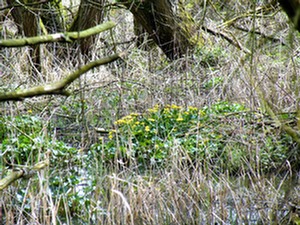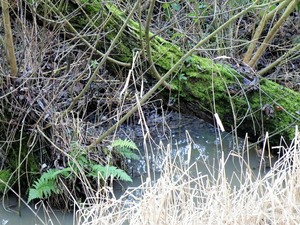

Biodiversity
Action
Plan
Species supported by woodland
Mammals found in Wet Woodland habitats include Otter, Water Vole, Harvest Mouse and Bats such as Noctule and Soprano pipistrelle.
Bird species. Woodland shelters a range of birds feeding on flies and other invertebrates. Wet woodland is particularly notable for Willow Tit, Reed Bunting, Lesser Spotted Woodpecker.
Lesser Redpoll and Siskin.
Reptiles and amphibians. Wet woodland supports Grass Snake, Common Toad and Great Crested Newt
Invertebrates
Wet Woodland supports a wide range of insects and other invertebrates. Examples: From Worsbrough willow carr: Meligramma guttatum, scarce hoverfly
From: Gunthwaite Dam: Bohemannia quadrimaculella A very local and rare micro-moth, found in alder carr
More examples available.
Plants.
Although few plants depend on wet woodland, many species thrive there including Marsh Marigold, Opposite-leaved Golden Saxifrage, Yellow Flag Iris, ferns, sedges, rushes, reeds, mosses and liverworts.
Wet Woodland maintains the most wildlife species if it is diverse in structure. Open wet soil, and sometimes standing or running water, leaf litter, high humidity, older and younger trees, scrub, abundant dead wood and a mosaic of vegetation, each feature adds to the range of species supported.
Dead and decayed wood, often present in large amounts, is an essential component of Wet Woodland. Standing dead trees, dead branches, snags on living trees, fallen branches and stumps, all subject to rot and decay, support a special array of beetles and other invertebrate species. Birds feed on them and some like Willow Tit excavate nest holes in rotten wood.
Humid leaf litter as well as decaying wood supports a great range of invertebrate species.
Insects often require specific species of tree, shrub and ground cover as larval food plants.
The scrub condition of Wet Woodland is important for species like Willow Tit. Otter uses Wet Woodland scrub for resting places when near running water.


Wet Woodland Habitat Features
The wet conditions of Wet Woodland provide specialised habitats not found in other woodland. Different species use one or more of the Wet Woodland features for food or foraging, nesting, roosting, shelter and a refuge from predators.

Wet Woodland features and species